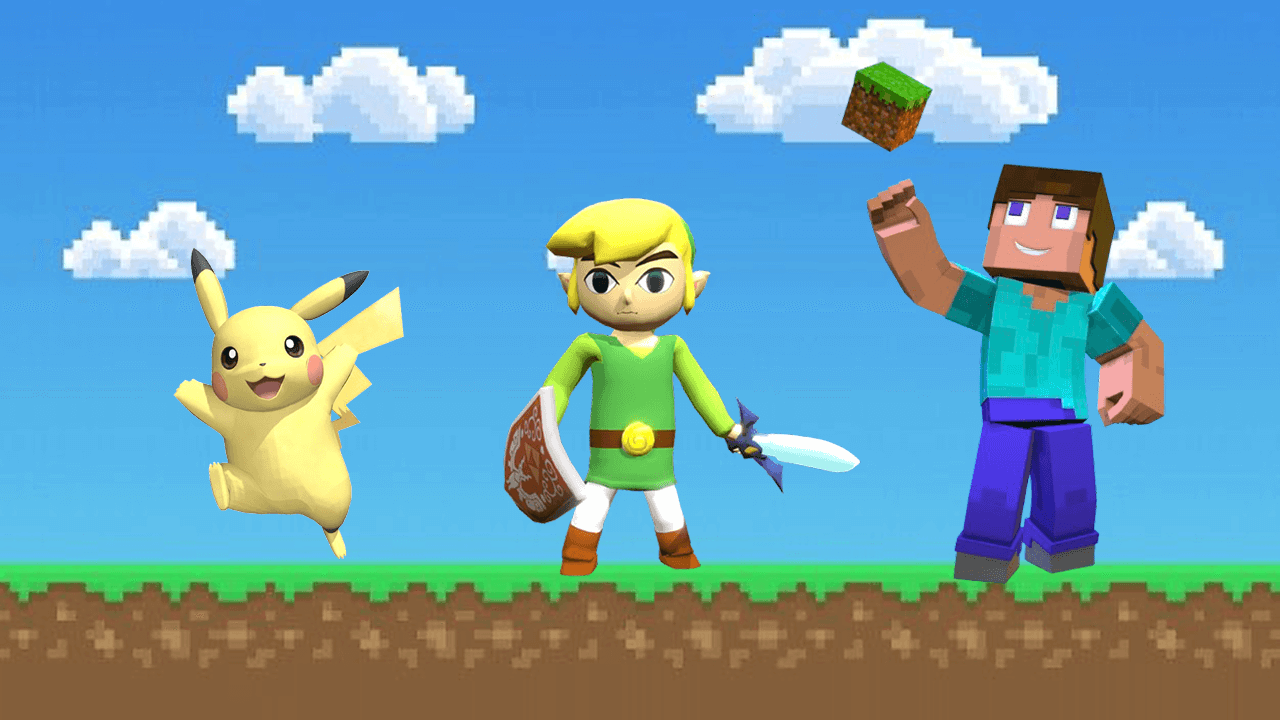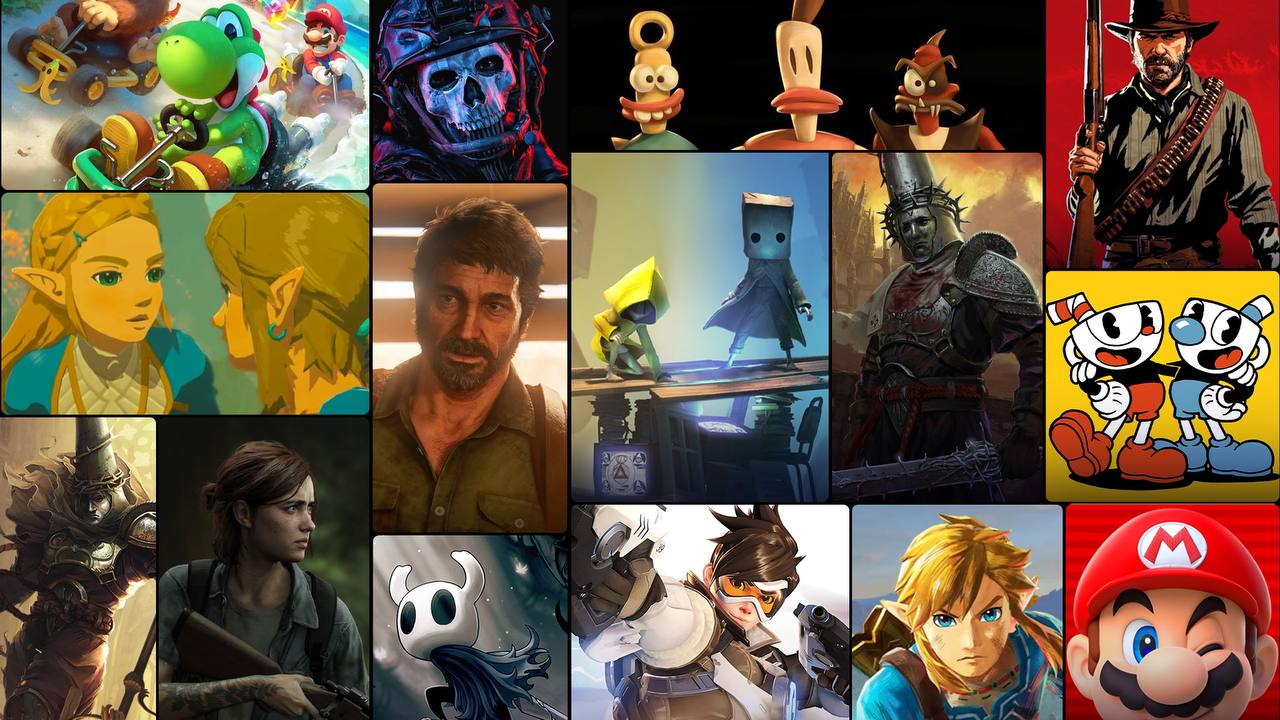Mobile gaming has come a long way since the days of Snake on Nokia phones. With the rise of smartphones and tablets, mobile gaming has exploded in popularity, with millions of people around the world playing games on their mobile devices every day. But what does the future hold for mobile gaming?
One thing is for sure, mobile gaming is not going anywhere. In fact, it is only going to get bigger and better. With the increasing power of mobile devices, developers are able to create more complex and graphically stunning games than ever before. From casual puzzle games to immersive RPGs, there is something for everyone in the world of mobile gaming.
As technology continues to advance, we can expect to see even more exciting developments in the world of mobile gaming. Virtual reality and augmented reality are already making their way into mobile gaming, offering players a more immersive and interactive experience. With the rise of 5G networks, we can also expect to see faster and more reliable connections, allowing for even more seamless online multiplayer experiences. The future of mobile gaming is bright, and we can’t wait to see what’s in store.
Evolution of Mobile Gaming
Mobile gaming has come a long way since its inception in the early 2000s. What started as simple games like Snake and Tetris on Nokia phones has now evolved into a multi-billion dollar industry. In this section, we’ll take a look at the evolution of mobile gaming and how it has changed over the years.
The Early Days
In the early days of mobile gaming, games were simple and straightforward. They were built using basic programming languages and had limited graphics and gameplay. The most popular games of this era were puzzle games like Tetris and Bejeweled, which could be played for hours on end.
| Game | Year | Platform | Description |
|---|---|---|---|
| Snake | 1997 | Nokia phones | The classic game where players controlled a growing snake to eat pellets and avoid hitting walls or itself. One of the earliest and most popular mobile games. |
| Tetris | 1994 | Hagenuk MT-2000 | The iconic puzzle game made its way to mobile devices, allowing players to rotate and arrange falling tetrominoes. Tetris was a massive hit on early mobile devices. |
| Bounce | 2001 | Nokia phones | A simple yet addictive game where players had to bounce a ball and keep it from hitting the ground. It showcased the potential for engaging mobile gaming experiences. |
| Bejeweled | 2001 | Palm OS, Windows Mobile | The popular match-3 puzzle game brought its colorful and addictive gameplay to mobile devices, becoming one of the earliest mobile gaming successes. |
| Diner Dash | 2005 | Mobile phones | This time-management game challenged players to serve customers in a busy diner setting, introducing more complex gameplay mechanics to mobile gaming. |
| Solitaire | Late 1990s | Various mobile platforms | The classic card game made its way to mobile devices, providing a familiar and enjoyable gaming experience on the go. |
| Bubble Bash | 2005 | Mobile phones | A fun puzzle game where players popped groups of colored bubbles, showcasing the potential for casual mobile gaming. |
| Angry Birds | 2009 | iOS, Android | The iconic physics-based puzzle game that propelled mobile gaming into the mainstream, becoming a cultural phenomenon and one of the most successful mobile game franchises. |
These early mobile games, while simple in nature, laid the foundation for the diverse mobile gaming development.
The Rise of Smartphones
With the advent of smartphones, mobile gaming took a giant leap forward. Smartphones allowed for more complex games with better graphics and gameplay.
Some very popular mobile games that helped make mobile gaming mainstream include:
- Angry Birds (2009) – A hit puzzle game where you launched birds at structures.
- Candy Crush Saga (2012) – A highly addictive puzzle game where you matched colorful candies.
- Fruit Ninja (2010) – A simple but fun game where you sliced flying fruit with your fingers.
- Temple Run (2011) – An endless running game with 3D graphics inspired by Indiana Jones.
- Clash of Clans (2012) – A strategy game where you built a village and battled others online.
- Minecraft Pocket Edition (2011) – The building and crafting game Minecraft on mobile phones.
- Pokemon Go (2016) – An augmented reality game that used your phone’s camera and location.
- PUBG Mobile (2018) – A popular battle royale shooting game on phones.
- Among Us (2018) – A social deception game that became very popular during COVID lockdowns.
- Call of Duty Mobile (2019) – A high-quality first-person shooter experience on mobile.
These hit mobile games showed the improving graphics, gameplay, and features that smartphones could offer. They made mobile gaming fun and accessible to many people.
The Emergence of AR and VR
The emergence of augmented reality (AR) and virtual reality (VR) has opened up new possibilities for mobile gaming. Augmented reality (AR) and virtual reality (VR) technology has made mobile gaming even more exciting.
AR games use your phone’s camera to blend the real world with virtual game elements on your screen. This creates an immersive experience where the game world seems to exist in the environment around you.
Some popular AR mobile games include:
- Pokémon Go – This game lets you catch virtual Pokémon that appear in real-world locations using your phone’s camera.
- Ingress – Players join teams and battle for control of virtual portals located at real-world landmarks.
Virtual reality (VR) headsets allow you to enter fully immersive 3D virtual worlds for gaming. While VR used to require a powerful PC, mobile VR headsets like the Oculus Quest make it possible to play VR games using just a mobile phone or standalone headset.
With a mobile VR headset, you can enjoy incredible gaming experiences like:
- First-person shooters and action games with 360-degree mobility
- Escape room puzzles where you use your hands in the virtual space
- Guided VR experiences and adventures in fantasy worlds
AR blends reality and virtual gaming, while VR headsets create entirely new digitally-crafted realities. Both allow mobile gamers to interact with games in novel and immersive ways never before possible.
The Future of Mobile Gaming
The future of mobile gaming looks bright. With the continued growth of AR and VR technology, we can expect to see even more immersive and interactive games in the years to come. Mobile gaming has already surpassed console and PC gaming in terms of revenue, and it shows no signs of slowing down. As technology continues to evolve, so too will mobile gaming, and we can’t wait to see what the future holds.
Current Trends in Mobile Gaming
Mobile gaming has come a long way since the days of Snake and Tetris. With the rise of smartphones and tablets, mobile gaming has become a massive industry, with millions of players around the world. Here are some of the current trends in mobile gaming that are shaping the future of this industry.
Augmented Reality Escapades
Augmented reality (AR) has been a buzzword in the tech industry for a while now, and it’s starting to make its way into mobile gaming. AR games use your device’s camera and sensors to overlay digital elements onto the real world.
Some of the most popular examples of AR mobile games are Pokemon Go and Ingress. In Pokemon Go, you can see virtual Pokemon characters appearing in the real-world environment around you through your phone’s camera view. You can then try to catch these virtual Pokemon by throwing Poke Balls at them on your screen.
Ingress is another hit AR game where two teams battle for control of virtual portals located at real-world landmarks and points of interest. The game overlays these portals onto your camera view, allowing you to interact with them in the real environment around you.
AR technology makes these games incredibly immersive and engaging. Instead of just looking at a digital game world on your screen, AR blends digital gaming elements seamlessly with your actual surroundings. It creates a magical experience where the real and virtual worlds merge together.
As AR capabilities in mobile devices continue improving, we can expect to see even more innovative and mind-blowing AR games in the future. Game developers will find creative new ways to bring digital gaming universes to life within the real world through AR technology.
AR gaming provides a uniquely interactive and captivating experience that simply can’t be replicated on a traditional screen alone. That’s why many experts believe AR will play a huge role in the future of mobile gaming entertainment.
Multiplayer Madness
Mobile gaming used to be a solitary experience, but that’s no longer the case. Multiplayer games are becoming more and more popular, with titles like Fortnite, PUBG Mobile, and Clash of Clans leading the way. These games allow players to team up with friends or strangers from around the world to take on challenges and compete against each other.
| Game | Genre | Multiplayer Features |
|---|---|---|
| Fortnite | Battle Royale | Cross-platform multiplayer, squad-based gameplay, in-game communication |
| PUBG Mobile | Battle Royale | Online multiplayer with up to 100 players, team-based matches, voice chat |
| Clash of Clans | Strategy | Clan system, clan wars, friendly challenges, global chat |
| Call of Duty: Mobile | First-Person Shooter | Online multiplayer matches, team deathmatch, battle royale mode |
| Among Us | Social Deduction | Online multiplayer with up to 15 players, voice chat, task collaboration |
| Minecraft | Sandbox | Multiplayer servers, collaborative world-building, mini-games |
| Roblox | Massively Multiplayer | User-generated games, virtual worlds, social hangouts |
| Brawl Stars | Multiplayer Online Battle Arena (MOBA) | 3v3 battles, team-based gameplay, global and local leaderboards |
| Pokémon GO | Augmented Reality | Raid battles, trading, battling at gyms with other players |
| Mario Kart Tour | Racing | Multiplayer races, in-game friends, leaderboards |
These games have popularized various multiplayer features on mobile devices, such as cross-platform play, team-based gameplay, voice chat, global leaderboards, and social interactions.
Cloud Gaming Conquests
Cloud gaming is another trend that’s shaping the future of mobile gaming. With cloud gaming, players can stream games to their devices instead of having to download and install them. This technology has the potential to make high-end gaming accessible to anyone with a smartphone or tablet. Services like Google Stadia and Microsoft xCloud are leading the charge in this space.
Overall, the future of mobile gaming looks bright. With new technologies like AR, multiplayer, and cloud gaming, there’s never been a better time to be a mobile gamer.
Technological Advances
Foldable Phone Frenzy
Mobile gaming has come a long way since the days of Snake and Tetris. With the advent of foldable phones, there is no telling where the future of mobile gaming will go. These phones offer a larger screen real estate, which means that games can be more immersive than ever before. The foldable phone frenzy has only just begun, and we can expect to see more and more games optimized for this new form factor.
5G and Beyond
With the rollout of 5G networks, mobile gaming is set to get a major boost. 5G networks offer faster speeds and lower latency, which means that games will load faster and run smoother. This will also enable more complex and visually stunning games to be developed. But the future of mobile gaming doesn’t end with 5G. Beyond 5G, we can expect to see even faster speeds and lower latency, which will open up a whole new world of possibilities for mobile gaming.
In conclusion, the future of mobile gaming looks bright with the technological advances that are on the horizon. Foldable phones and 5G networks are just the beginning, and we can’t wait to see what else is in store for mobile gaming.
Monetization Models
In-App Purchase Extravaganza
In-app purchases are like the candy at the grocery store checkout line. You know you don’t need it, but it’s just too tempting to resist. And game developers know this all too well. That’s why they offer in-app purchases for everything from extra lives to virtual currency to exclusive content.
But be warned, some games take it to the extreme. You might think you’re getting a good deal on a bundle of gems or coins, only to find out that you need to spend even more to actually use them. It’s like buying a box of chocolates, only to realize that you need to pay extra for the privilege of opening the box.
Subscription Service Shenanigans
Subscription services are the new kid on the block when it comes to mobile gaming monetization models. Some games offer monthly or yearly subscriptions that give players access to exclusive content, early access to new features, and other perks.
But let’s be real, not all subscription services are created equal. Some are worth the price, while others are just a cash grab. It’s like signing up for a gym membership, only to find out that all the good equipment is always taken and the showers don’t have hot water.
In conclusion, while in-app purchases and subscription services can be a great way for game developers to make money, players should always be cautious and read the fine print before shelling out their hard-earned cash. After all, you don’t want to end up like the person who spent $500 on virtual furniture for their virtual house.
Gaming Ecosystems
Cross-Platform Play Parties
The future of mobile gaming is all about breaking down barriers and bringing players together, regardless of what device they are using. Cross-platform play parties are the perfect example of this trend. These parties allow players on different devices to join together in the same game and play together in real-time. Imagine playing your favorite mobile game on your phone while your friend plays on their console, and another friend joins in on their PC. It’s the ultimate gaming party, and it’s coming to a device near you.
Esports Explosion
Esports is exploding in popularity, and mobile gaming is no exception. As more and more people get into competitive gaming, the mobile gaming industry is responding with new and exciting ways to compete. Whether it’s through in-game tournaments or dedicated esports events, mobile gaming is becoming a serious contender in the world of competitive gaming. And with the rise of streaming services like Twitch, it’s easier than ever to watch and learn from the best players in the world.
Mobile gaming is no longer just a way to pass the time. It’s a legitimate form of entertainment, and the future looks bright for gamers everywhere. With cross-platform play parties and the esports explosion, the gaming ecosystem is evolving in exciting ways, and it’s only going to get better from here.
User Experience and Accessibility
Interface Innovations
Mobile gaming has come a long way in terms of interface innovations that enhance how players interact and control games. In the early days of mobile gaming, games had very basic touch controls like tapping the screen or using on-screen joysticks and buttons. However, as mobile devices became more powerful and advanced, new interface technologies emerged.
One significant interface innovation is haptic feedback, which allows games to vibrate in sync with on-screen actions or events. This tactile feedback adds an extra layer of immersion and makes the gameplay feel more realistic and engaging. Many action games and racing games now use haptic feedback to simulate the feeling of explosions, crashes, or other impacts.
Another interface breakthrough is the use of motion controls, which allow players to physically move or tilt their mobile device to control certain actions within a game. This technology has been particularly popular in augmented reality (AR) games like Pokémon Go, where players can move their device to explore the virtual world overlaid on the real environment.
Mobile gaming has also adopted voice controls, allowing players to issue commands or perform actions using just their voice. This hands-free interface is convenient for multitasking or playing while on the move. Voice controls are often used in strategy games, puzzle games, or games that require frequent menu navigation.
Some mobile games have even started experimenting with eye-tracking technology, which tracks the player’s eye movements to control certain in-game actions or interactions. While still an emerging technology, eye-tracking could potentially revolutionize how players aim, navigate, or interact with virtual environments in mobile games.
Gesture-based controls are another interface innovation gaining traction in mobile gaming. Players can perform specific gestures on the touchscreen, such as swiping, pinching, or drawing shapes, to trigger various actions within the game. This intuitive control method can make gameplay more natural and engaging, especially for certain genres like puzzle games or adventure games.
As mobile devices continue to evolve and get new technologies, we can expect to see even more innovative interface solutions that enhance the overall mobile gaming experience. These interface innovations not only make games more immersive and engaging but also cater to different playing styles and preferences, making mobile gaming more accessible and enjoyable for a wider audience.
Gaming for Everyone
Accessibility is an important consideration when it comes to mobile gaming. Developers are increasingly focused on creating games that are inclusive and accessible to everyone, regardless of their abilities.
One way to achieve this is through the use of adaptive controls. These controls allow users to customize the game controls to their specific needs. For example, users can adjust the size and position of buttons or use voice commands to control the game.
Another way to make games more accessible is through the use of assistive technology. For example, text-to-speech technology can be used to read out game instructions or provide feedback to the user. Similarly, closed captioning can be used to provide subtitles for users who are deaf or hard of hearing.
In conclusion, user experience and accessibility are important considerations for the future of mobile gaming. With the use of innovative interfaces and a focus on inclusivity, developers can create games that are engaging and accessible to a wider audience.










